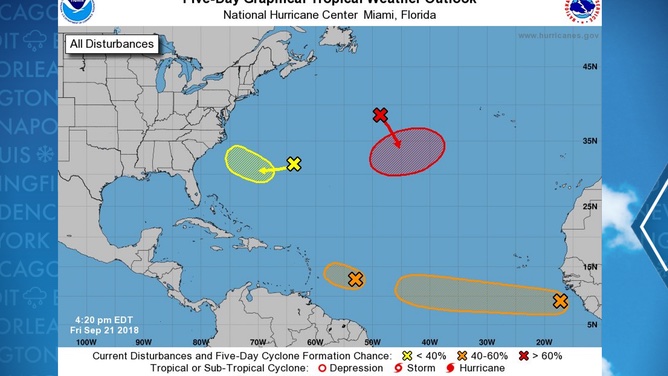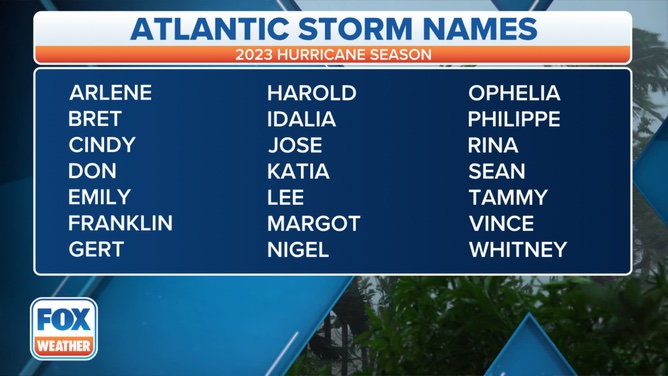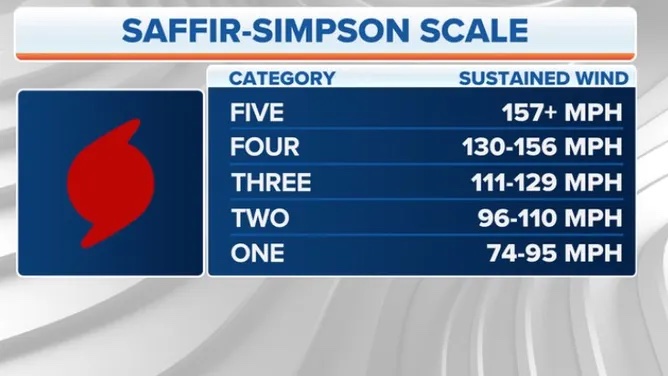New names, major changes announced for the 2023 hurricane season
Every year the National Hurricane Center, in coordination with the World Meteorological Organization, examine practices and develop new messaging that are meant to save lives and mitigate property losses from Mother Nature’s most powerful forces.
Major changes are usually tested internally within the U.S. agency for several years before being unveiled to the public.
Over the last few decades, changes have included the naming of subtropical systems, the issuance of storm surge watches and warnings and the expansion of lead time for wind alerts for both tropical storms and hurricanes.
During the WMO’s annual hurricane committee meeting in 2022, the NHC outlined potential changes that were being examined internally to help further forecasts, and that could be released to fellow NOAA agencies, emergency managers and interested users in the upcoming seasons.
Two potential enhancements included the issuance of 7-day tropical weather outlooks and releasing 6-7 day track and intensity forecasts for developed cyclones.
Expanded tropical weather outlooks
The NHC expects starting around May 15, 2023, a 7-day tropical weather outlook will replace the current 5-day spread.
The 5-day tropical weather outlook has been in operation since 2015, but forecasters believe the two-day enhancement does not significantly impact the product’s reliability.

The color-coding scale, with yellow indicating a low probability of development, orange a medium likelihood and red with a high likelihood of development, will not change with the added two days on the outlook.
The outlooks will continue to be released at regular intervals at 2 p.m., 8 p.m., 2 a.m. and 8 a.m. EDT.
The NHC outlooks are issued four times daily from May 15 through November 30.
New tropical cyclone names
The Atlantic basin has six lists of 21 names that repeat every six years. The 2023 tropical system naming list was last used during the infamous 2017 hurricane season and produced storms such as Harvey, Irma and Maria.
Due to the destructive and deadly nature of these storms, the World Meteorological Organization retired the names, and they’ll never be used to identify a cyclone again.
The upcoming 2023 hurricane season will have four new names that have never been used before in the Atlantic basin. This year’s new names include: Harold, Idalia, Margot and Nigel.

It is common for the “I” storm to be replaced by the WMO, and the letter has seen the most retirements.
Since the retirement practice began in 1954, 12 “I” storms have been removed from naming lists.
The formation date of the eighth storm usually coincides with when environmental conditions are the most favorable for tropical cyclone development.
Potential change to start of hurricane season
A team of meteorologists at the National Oceanic and Atmospheric Administration has reviewed the potential ramifications of adjusting the annual June start date for the Atlantic basin hurricane season, but there are no indications from the World Meteorological Organization that it will modify the scheduled start and end dates anytime soon.
Currently, the hurricane season runs from June 1 to November 30, but a growing number of May storms triggered forecasters to start examining whether an adjustment to the season’s dates was needed and whether a start date in May would be more suitable.

The start and end dates haven’t been adjusted since after the 1964 season, when June 15 signaled the season’s start and November 15 marked the official end.
Some in the weather enterprise consider the proposition to move any of the potential dates to be a rather complex issue.
“People are getting engaged with messaging all the time about everything, and the question is how long can we keep people focused on hurricanes? With a May 15 start to the hurricane season, I think there are some messaging challenges,” Dr. Phil Klotzbach, a world-renowned tropical weather expert, previously stated.
NOAA estimates more than 97 percent of tropical cyclone activity happens between the current designated dates of the season.
Read the full article Here


